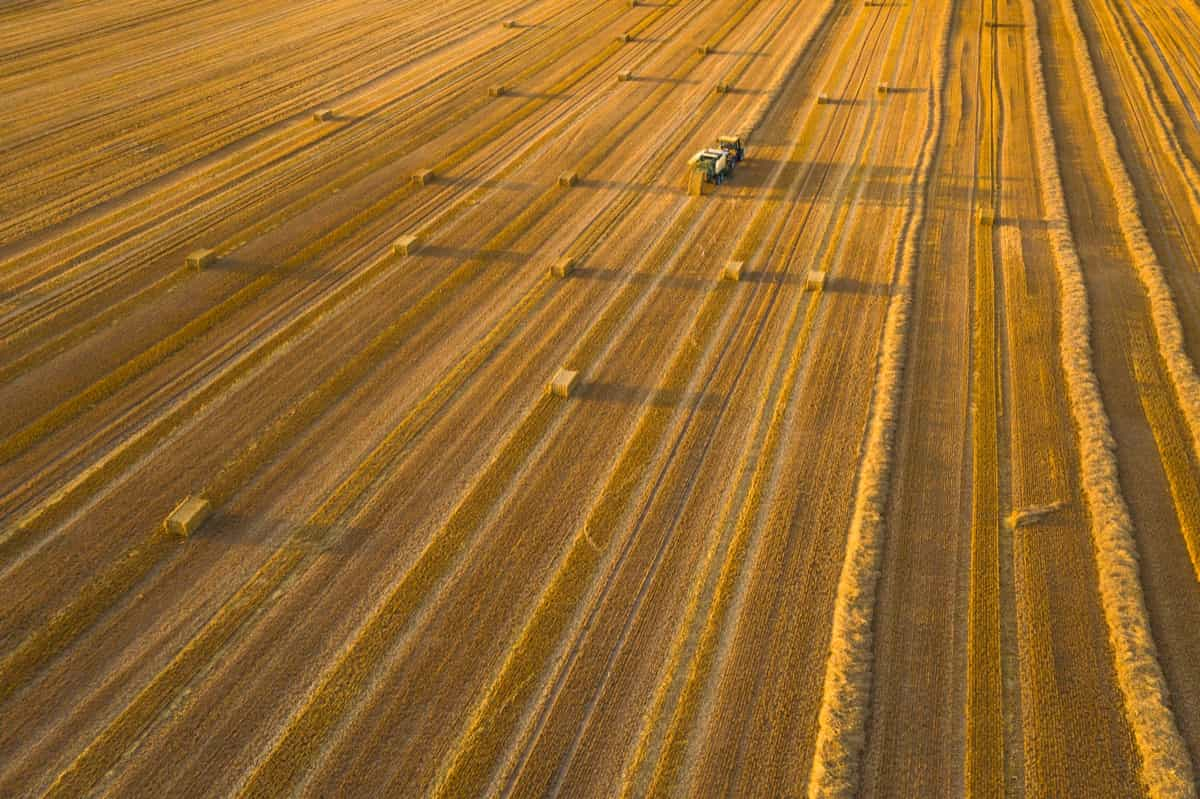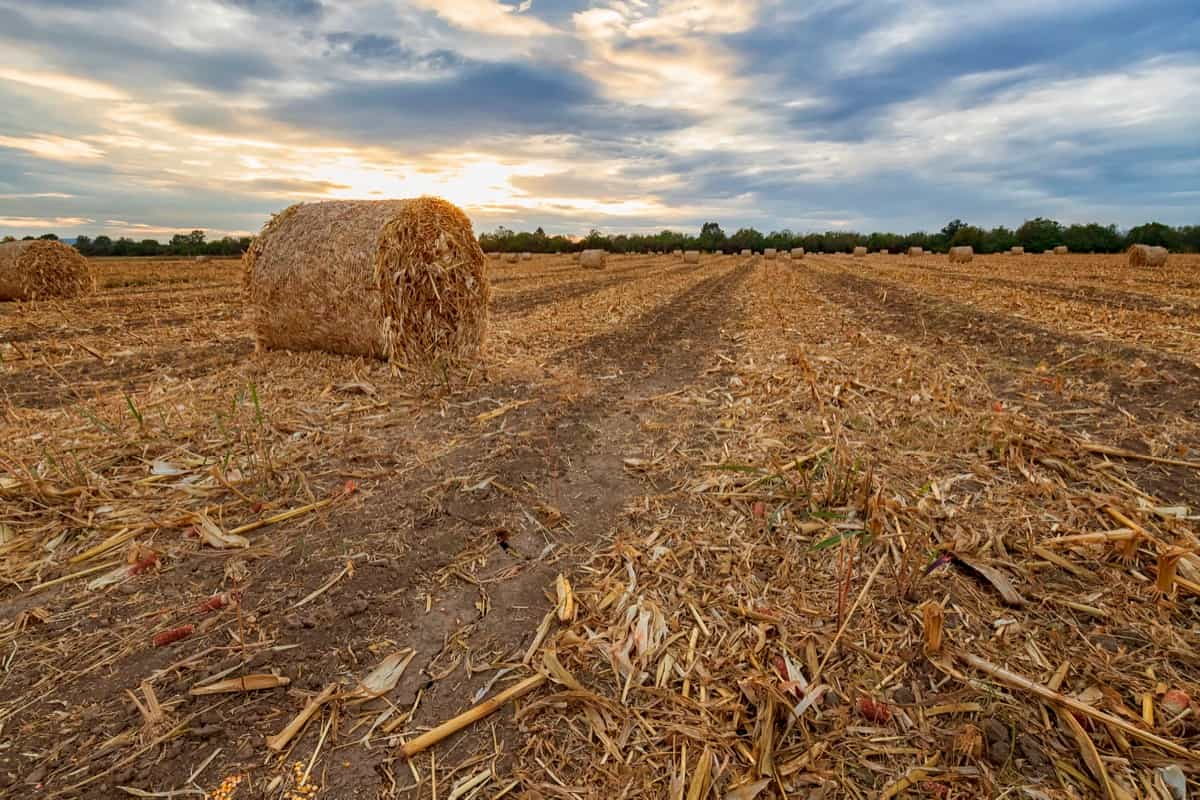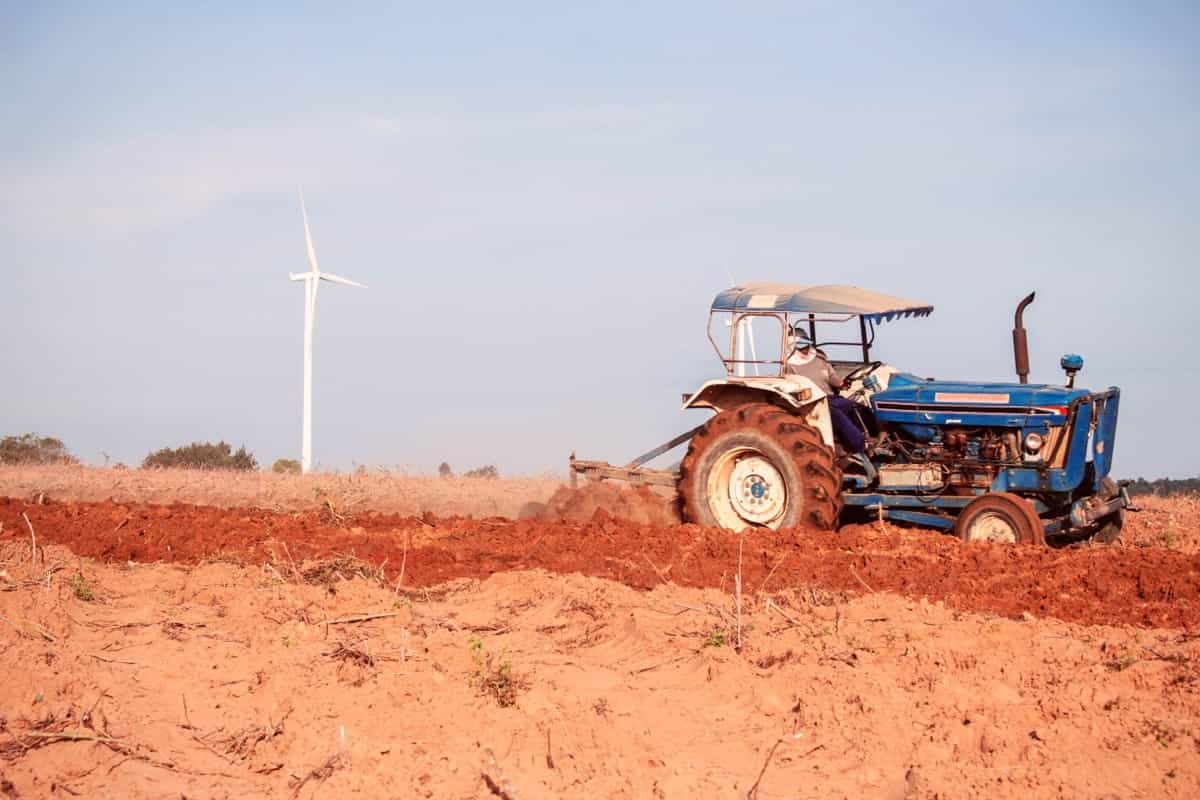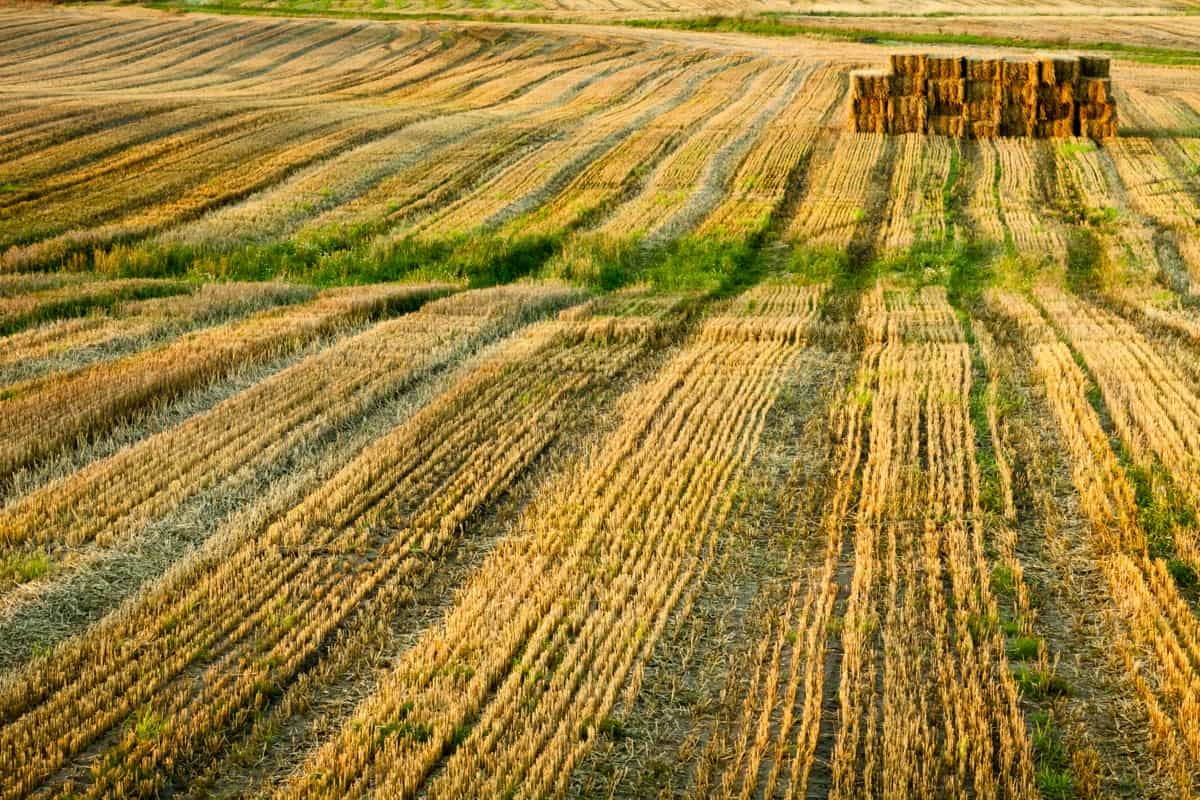Crop residue management is crucial in modern agricultural practices, offering a sustainable approach to enhance productivity and environmental stewardship. By effectively managing the leftover plant material after harvest, farmers can optimize soil health, reduce soil erosion, and mitigate the release of greenhouse gases.

This scientific exploration sheds light on the importance of maximizing crop residue management for agricultural success. We will delve into various strategies and techniques that promote the responsible handling and utilization of crop residues, ultimately fostering sustainable farming systems that benefit farmers and the planet.
What is Crop Residue Management?
Crop residue management refers to the practice of handling and utilizing leftover plant material, such as stalks, leaves, and roots, after harvesting crops. It is vital in maintaining soil health, improving agricultural productivity, and preserving the environment. When crops are harvested, they leave behind residue on the field.
This residue, if managed properly, can bring several benefits. It first serves as a shield, protecting the soil from wind and water erosion. Secondly, it helps retain moisture in the soil, reducing the need for excessive irrigation. Additionally, crop residues gradually decompose, releasing nutrients that nourish the soil and support future crop growth.
Proper crop residue management involves tilling, mulching, or incorporating residues into the soil. These practices ensure the residue breaks down efficiently, providing the maximum benefit to the soil and crops. However, it is important to strike a balance, as excessive residue can hinder seedling emergence and increase pest and disease risks.
Benefits of Crop Residue Management
Soil erosion prevention: Effective crop residue management reduces soil erosion by acting as a protective cover. Studies have shown crop residues can decrease soil erosion by up to 90%, preserving valuable topsoil and preventing sediment runoff into water bodies.
Moisture conservation: Crop residues help retain soil moisture by reducing evaporation. Research indicates that crop residue cover can decrease water loss from the soil by 25-50%, allowing crops to access water for a longer duration and reducing the need for additional irrigation.
In case you missed it: 15 Common Mistakes to Avoid in Cover Crops: Beginner’s Guide

Nutrient cycling: Crop residues contribute to nutrient cycling by gradually decomposing and releasing essential nutrients into the soil. Studies have demonstrated that residue incorporation can enhance soil fertility and increase nutrient availability for subsequent crops.
Carbon sequestration: Crop residues play a role in carbon sequestration, helping to mitigate climate change. Research suggests that proper residue management practices can significantly increase carbon storage in agricultural soils, reducing atmospheric carbon dioxide.
Weed suppression: Crop residue cover acts as a natural barrier, inhibiting weed growth. Studies have shown that residues can reduce weed emergence by up to 90%, reducing the reliance on synthetic herbicides and minimizing weed competition with crops.
Disease and pest management: Crop residues can help manage diseases and pests by disrupting their life cycles and reducing their population. Research indicates that residue incorporation can effectively reduce the incidence of certain crop diseases and pests, leading to healthier plants and improved yields.
Improved soil structure: Crop residues enhance soil structure by promoting aggregation and reducing compaction. Studies have demonstrated that residue retention can improve soil porosity, allowing better water infiltration and root development.
Biodiversity promotion: Crop residue management practices incorporating diverse crop residues can support biodiversity by providing habitat and food sources for beneficial insects, microorganisms, and small animals. This can contribute to a more balanced ecosystem and natural pest control.
Cost savings: Proper management of crop residues can lead to cost savings for farmers. Farmers can reduce the need for additional inputs like irrigation, fertilizers, and herbicides by reducing soil erosion, conserving moisture, and enhancing nutrient cycling.
Sustainable agriculture: Overall, effective crop residue management practices support sustainable agriculture by minimizing environmental impacts, conserving resources, and promoting long-term soil health and productivity.
Methods for Managing Crop Residues
Tillage: Tillage is a common method for managing crop residues, involving the mechanical incorporation of residues into the soil. Research indicates that tillage can facilitate residue decomposition and nutrient release but may also increase soil erosion and disrupt soil structure.
In case you missed it: An Approach to Moisture Stress Management in Vegetable Crops: Thriving Against the Drought

Mulching: Mulching involves spreading crop residues on the soil surface to create a protective cover. Studies have shown that mulching can reduce soil erosion by up to 80% and improve soil moisture retention. It also helps regulate soil temperature, suppress weed growth, and promote beneficial soil microorganisms.
Conservation tillage: Conservation tillage practices aim to minimize soil disturbance while retaining a certain amount of crop residues on the soil surface. Scientific data suggests that conservation tillage can reduce soil erosion by up to 85% compared to conventional tillage methods. It also enhances soil organic matter, water infiltration, and carbon sequestration.
Crop residue grazing: Allowing livestock to graze on crop residues is a beneficial method of residue management. Studies have shown that residue grazing can provide additional income for farmers, reduce the need for mechanical residue removal, and enhance nutrient cycling as livestock return nutrients to the soil through manure.
Bioenergy production: Utilizing crop residues for bioenergy production is gaining popularity. Scientific research highlights the potential of crop residues as feedstock for biofuel production, offering an alternative energy source while reducing the reliance on fossil fuels. This method can also help alleviate residue management challenges by providing a valuable economic outlet for excess residues.
Importance of Crop Residue Incorporation
- Soil erosion control: Research shows that incorporating crop residues can reduce soil erosion by up to 80%, preventing the loss of valuable topsoil.
- Moisture retention: Crop residue incorporation helps retain soil moisture, reducing evaporation and improving water availability for plant uptake.
- Nutrient cycling: Incorporating residues enhances nutrient cycling, promoting the release of essential nutrients into the soil, thus improving fertility and supporting crop growth.
- Organic matter enrichment: Crop residues contribute to organic matter accumulation, enhancing soil structure, water-holding capacity, and nutrient-holding capacity.
- Carbon sequestration: Incorporating residues facilitates carbon sequestration in the soil, mitigating climate change by removing carbon dioxide from the atmosphere.
- Weed suppression: Research indicates crop residue incorporation can suppress weed growth, reducing competition and herbicide needs.
- Disease management: Incorporating residues can help manage certain crop diseases by reducing pathogen survival and spreading.
Cover Crops for Residue Management
- Winter rye: Winter rye is a popular cover crop that helps suppress weeds, reduce erosion, and increase organic matter in the soil. Studies have shown that winter rye can retain up to 95% of rainfall, preventing runoff and nutrient loss.
- Crimson clover: Crimson clover is known for its nitrogen-fixing abilities, improving soil fertility. It also provides excellent ground cover, reducing erosion and suppressing weeds.
- Buckwheat: Buckwheat is a fast-growing cover crop that smoots weeds and attracts beneficial insects. It has a fibrous root system that improves soil structure and promotes water infiltration.
- Annual ryegrass: Annual ryegrass helps control erosion, improves soil structure, and enhances nutrient cycling. It is widely used for its ability to scavenge excess nutrients, reducing leaching into groundwater.
- Hairy vetch: Hairy vetch is a legume cover crop that fixes nitrogen in the soil, making it available for future crops. It also acts as a weed suppressor and provides erosion control.
In case you missed it: Doubling Yield and Income of Mustard-based Cropping System

Crop Residue Burning vs Conservation
Crop residue burning, the intentional burning of leftover plant material in agricultural fields, harms air quality, human health, and the environment. It releases significant amounts of smoke, particulate matter, and air pollutants, leading to poor air quality and negative health impacts. Moreover, it contributes to greenhouse gas emissions, including carbon dioxide, methane, and nitrous oxide, exacerbating climate change.
Additionally, crop residue burning results in the loss of valuable organic matter and nutrients from the soil, negatively impacting soil health and fertility. It also increases the risk of wildfires, as the flames can spread unpredictably, causing damage to ecosystems and property. On the other hand, conservation cover practices, such as leaving crop residues or planting cover crops, offer numerous benefits.
Conservation cover helps prevent soil erosion, retain moisture, and reduce irrigation needs. It promotes nutrient cycling, enhances soil organic matter content, and fosters the growth of beneficial soil microorganisms. Additionally, conservation cover can suppress weed growth, reducing reliance on herbicides. By providing habitat and food sources, conservation cover supports biodiversity, creating a healthier ecosystem.
Soil Erosion Control Through Residue Management
Soil erosion control through residue management is crucial for sustainable agriculture. Research shows that crop residue cover can reduce soil erosion by up to 90%, safeguarding topsoil and preventing sediment runoff into water bodies. The conservation tillage system, which incorporates residue into the soil, has been proven effective in reducing erosion rates by 50-90% compared to conventional tillage practices.
The USDA states that residue management practices like conservation tillage and mulching can reduce soil erosion by 50% or more, improving soil quality and water conservation. Maintaining at least 30% residue cover on the soil surface is critical for erosion control and soil health. Proper residue management is essential for mitigating soil erosion, protecting valuable resources, and promoting sustainable land management practices.
Crop Residue Decomposition and Nutrient Cycling
Crop residue decomposition plays a crucial role in nutrient cycling, where the residues gradually break down and release essential nutrients into the soil. Research indicates that the decomposition rate varies depending on residue type, climate, and management practices. On average, crop residues can decompose within six months to 2 years.
In case you missed it: Soil Solarization for Vegetables and High-Value Crops: A Non-Chemical Method for Weed Control

For instance, a study found that corn stalks decomposed by 50–55% in approximately ten months. During decomposition, nutrients like nitrogen, phosphorus, and potassium are released, contributing to soil fertility. Research shows that residue incorporation can increase nutrient availability for subsequent crops, reporting up to 30% higher nutrient content in soils with residue incorporation than in bare soils.
Conservation Tillage Practices for Residue Retention
- Soil erosion reduction: As reported by studies, conservation tillage practices can reduce soil erosion by 50-90% compared to conventional tillage methods.
- Water conservation: Residue retention through conservation tillage helps conserve soil moisture, reducing the need for irrigation. Research suggests that residue cover can reduce water evaporation by 30-70%.
- Carbon sequestration: Conservation tillage practices with residue retention promote carbon sequestration in the soil. Studies indicate that these practices can increase soil organic carbon levels by 10-40%.
- Improved soil quality: Residue retention enhances soil structure, aggregate stability, and water infiltration capacity, improving soil health and fertility.
- Crop yield benefits: Conservation tillage practices with residue retention have been shown to have no negative impact on crop yields and, in some cases, even improve yields, particularly for crops like corn, soybeans, and wheat.
- Cost savings: Adopting conservation tillage practices can save costs by reducing fuel consumption, labor requirements, and erosion-related losses.
Crop Residue Management for Weed Control
Crop residue management can effectively contribute to weed control in agricultural fields. Scientific research has shown that crop residue cover can reduce weed emergence by up to 90%. Crop residues impede weed growth and competition with crops by forming a physical barrier.
This reduces the reliance on synthetic herbicides and promotes sustainable weed management practices. Additionally, studies have demonstrated that residue incorporation into the soil can inhibit weed seed germination and seedling establishment. Composing crop residues also releases allelopathic compounds that can suppress weed growth.
Impacts of Crop Residue Removal on Soil Fertility
The removal of crop residues can have significant impacts on soil fertility. Research indicates that crop residue removal can result in a decline in organic matter content by approximately 20–48%. This reduction in organic matter can negatively affect soil structure, nutrient availability, and water-holding capacity. Additionally, the removal of crop residues can lead to a decrease in soil microbial activity, impacting important nutrient cycling processes.
Crop Residue Management in Organic Farming Systems
Organic farmers who effectively manage crop residues experience improved soil health, nutrient cycling, and weed suppression. Studies have shown that incorporating crop residues into organic systems can increase soil organic matter content by 15-50%, promoting soil fertility and water-holding capacity. Additionally, crop residues help reduce weed emergence by up to 90%, minimizing the need for synthetic herbicides. Organic farmers prioritizing residue management have also reported increased microbial activity, enhancing nutrient availability and plant growth.
Crop Residue Management for Greenhouse Gas Mitigation
Crop residue management significantly contributes to mitigating greenhouse gas emissions and climate change efforts. It reduces CO2 emissions by preventing burning, N2O emissions by reducing nitrogen availability, enhancing carbon sequestration through conservation tillage and mulching, and improving methane emissions by reducing waterlogged conditions and potentially contributing to CH4 production. Farmers can contribute to reducing greenhouse gas emissions and promoting climate change by incorporating residues into the soil.
In case you missed it: Exploring the Potential of Tuber Crops in Integrated Farming Systems: Maximizing Yields and Profit

Economic Considerations of Crop Residue Management
Crop residue management decisions are crucial for farmers, as they can lead to cost savings, increased crop productivity, soil fertility enhancement, reduced erosion-related expenses, carbon credit opportunities, and market demand for sustainably produced crops.
Proper residue management practices can reduce labor, fuel, and equipment costs, improve soil health, nutrient availability, and moisture retention, reduce erosion-related expenses, and provide financial incentives for farmers participating in carbon credit markets. Additionally, residue management practices can align with market demands, potentially leading to premium prices for agricultural products.
Conclusion
Maximizing crop residue management is a sustainable approach that brings multiple benefits to agriculture. Farmers can enhance soil health, conserve resources, improve productivity, and contribute to a more sustainable and resilient agricultural system by optimizing residue handling.
- Modern Sheep Farming Technology: The Future of Sheep Husbandry
- Goat Farming Technology: The Future of Goat Husbandry
- How to Build a Low-budget Goat Shed: Cheap Ideas and Tips
- Goat Farming Training Programs in India: A Beginner’s Guide
- Types of Pesticides Used in Agriculture: A Beginner’s Guide
- Economical Aquaculture: A Guide to Low-Budget Fish Farming
- 15 Common Planting Errors That Can Doom Your Fruit Trees
- How to Make Houseplants Bushy: Effective Tips and Ideas
- Innovative Strategies for Boosting Coconut Pollination and Yield
- Pollination Strategies for Maximum Pumpkin Yield
- The Complete Guide to Chicken Fattening: Strategies for Maximum Growth
- Natural Solutions for Tulip Problems: 100% Effective Remedies for Leaf and Bulb-Related Issues
- Revolutionizing Citrus Preservation: Towards a Healthier, Greener Future
- Natural Solutions for Peony Leaf and Flower Problems: 100% Effective Remedies
- Maximizing Profits with Avocado Contract Farming in India: A Comprehensive Guide
- Natural Solutions for Hydrangea Problems: 100% Effective Remedies for Leaf and Flowers
- The Ultimate Guide to Choosing the Perfect Foliage Friend: Bringing Life Indoors
- From Sunlight to Sustainability: 15 Ways to Use Solar Technology in Agriculture
- The Ultimate Guide to Dong Tao Chicken: Exploring from History to Raising
- The Eco-Friendly Makeover: How to Convert Your Unused Swimming Pool into a Fish Pond
- Mastering the Art of Delaware Chicken Farming: Essentials for Healthy Backyard Flocks
- 20 Best Homemade Fertilizers for Money Plant: DIY Recipes and Application Methods
- How to Craft a Comprehensive Free-Range Chicken Farming Business Plan
- Brighten Your Flock: Raising Easter Egger Chickens for Beauty and Bounty
- How to Optimize Your Poultry Egg Farm Business Plan with These Strategies
- Subsidy for Spirulina Cultivation: How Indian Government Schemes Encouraging Spirulina Farmers
- Ultimate Guide to Raising Dominique Chickens: Breeding, Feeding, Egg-Production, and Care
- Mastering the Art of Raising Jersey Giant Chickens: Care, Feeding, and More
- Ultimate Guide to Raising Legbar Chickens: Breeding, Farming Practices, Diet, Egg-Production
- How to Raise Welsummer Chickens: A Comprehensive Guide for Beginners
- How to Protect Indoor Plants in Winter: A Comprehensive Guide
- Ultimate Guide to Grow Bag Gardening: Tips, Tricks, and Planting Ideas for Urban Gardeners
- Guide to Lotus Cultivation: How to Propagate, Plant, Grow, Care, Cost, and Profit
- Agriculture Drone Subsidy Scheme: Government Kisan Subsidy, License, and How to Apply Online
- Ultimate Guide to Raising Araucana Chickens: Breed Profile, Farming Economics, Diet, and Care
- Bringing Hydroponics to Classroom: Importance, Benefits of Learning for School Students